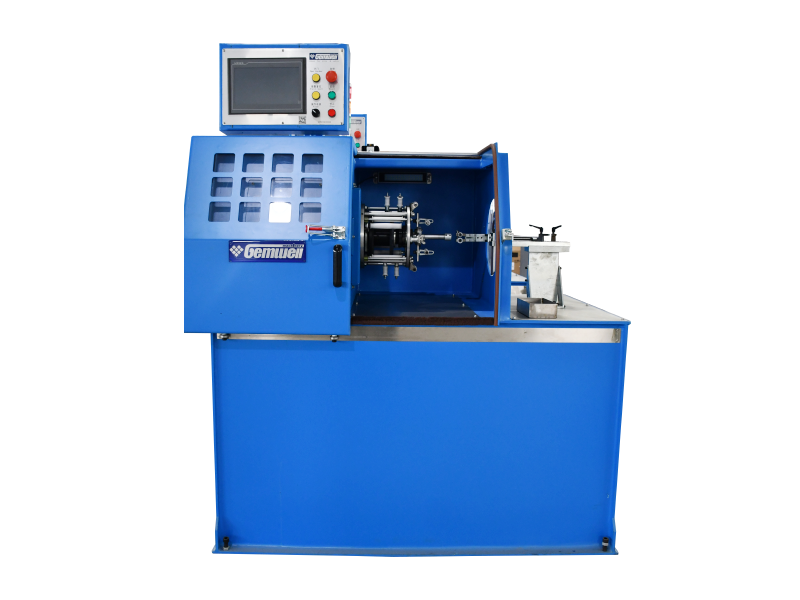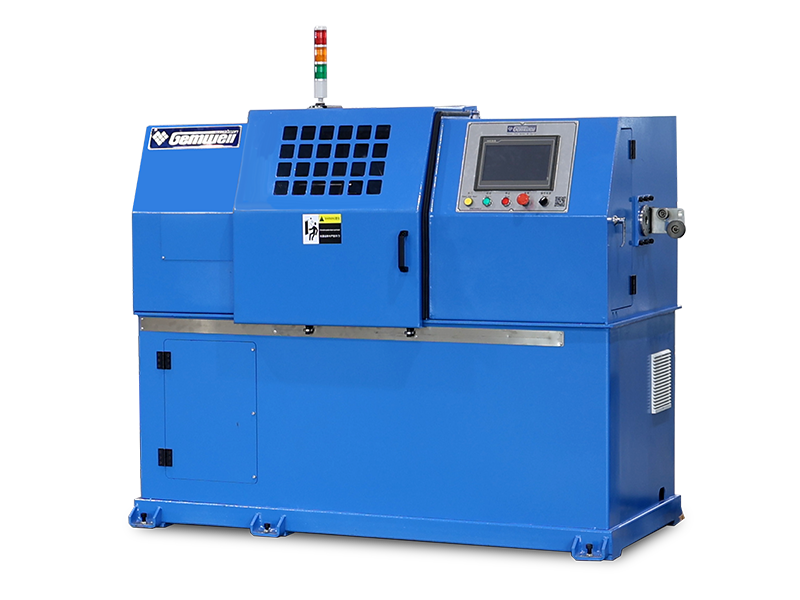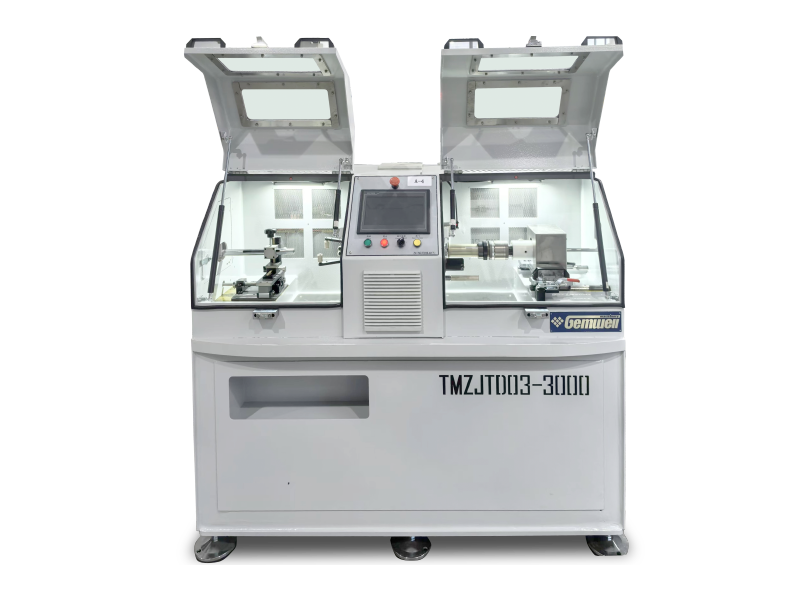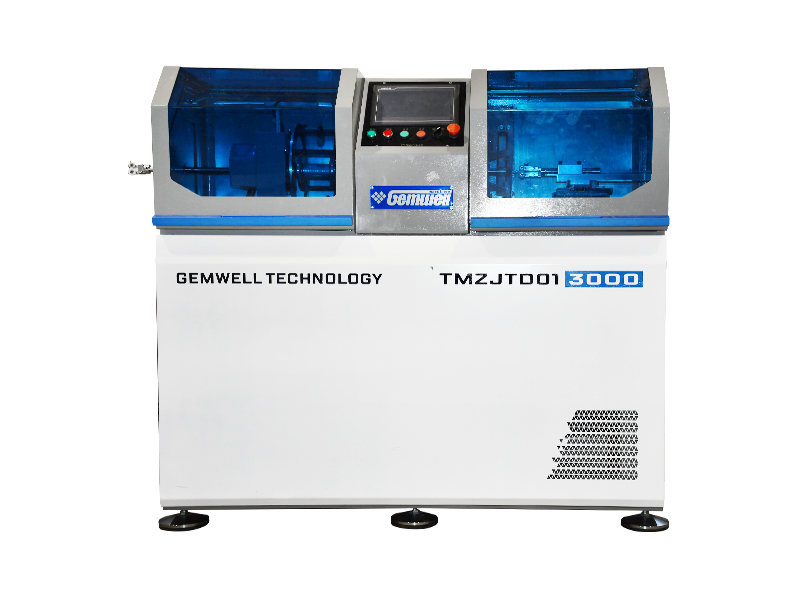Here's a plain-English breakdown of common extrusion machine types used in factories:
Content
1. Single-Screw Extruder
How it works: A rotating screw pushes material (like plastic pellets) through a heated barrel, melting it.
Everyday uses: Making pipes, plastic sheets, or basic wire insulation.
Key trait: Simple design, good for straightforward jobs.
2. Twin-Screw Extruder
How it works: Two screws interlock inside the barrel, mixing materials thoroughly.
Everyday uses: Blending recycled plastics, making wood-plastic decking, or medical tubing.
Key trait: Handles sticky or tricky materials better than single-screw machines.
3. Ram Extruder
How it works: A piston rams material through a die (like a giant cookie press).
Everyday uses: Shaping clay bricks, ceramic tubes, or soft metals like lead.
Key trait: Good for thick, heavy pastes that can't be screw-pushed.
4. Cold Extrusion Press
How it works: Squeezes metals without heating – just brute force.
Everyday uses: Crafting aluminum cans, copper wiring, or steel bolts.
Key trait: Saves energy; keeps metal stronger than hot methods.
5. Cable Coating Extruder
How it works: Wraps melted plastic/rubber around wires as they feed through.
Everyday uses: Insulating electrical wires, adding waterproof jackets to cables.
Key trait: Precision dies ensure no gaps or bubbles in the coating.
6. Food Extruder
How it works: Pushes dough through shaped dies, then cooks it instantly.
Everyday uses: Making breakfast cereals, pasta shapes, or pet kibble.
Key trait: Combines shaping and cooking in one machine.
7. Rubber Extruder
How it works: Special screws handle sticky raw rubber without clogging.
Everyday uses: Car tire treads, seals for windows, or hoses.
Key trait: Tackles rubber's stretchiness better than plastic extruders.
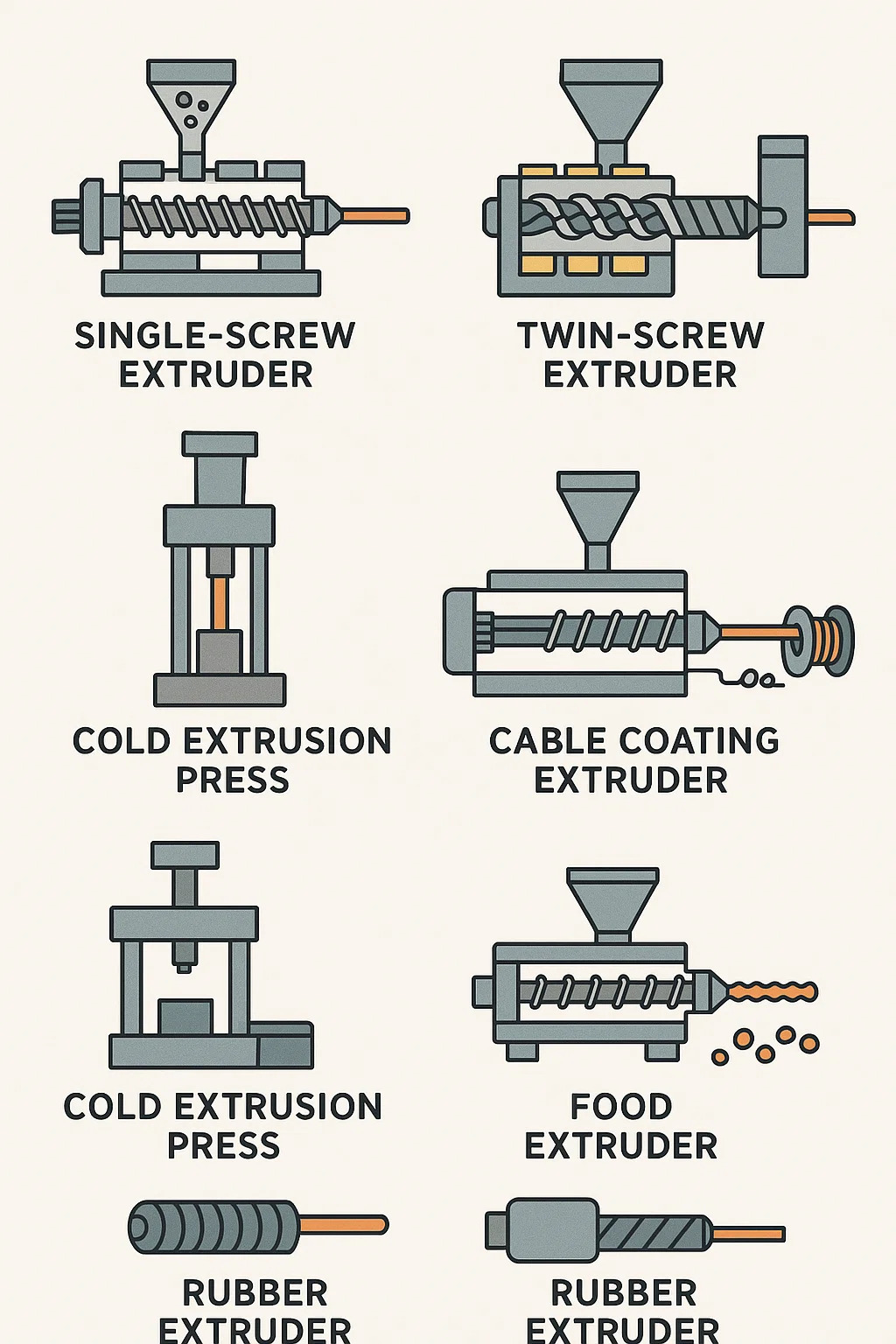
 E-mail: info@gem-cablesolution.com
E-mail: info@gem-cablesolution.com Address: No.8 Yuefeng Rd, High Tech Zone, Dongtai, Jiangsu, China | No.109 Qilin East Rd, Daning, Humen, Dongguan, Guangdong, China.
Address: No.8 Yuefeng Rd, High Tech Zone, Dongtai, Jiangsu, China | No.109 Qilin East Rd, Daning, Humen, Dongguan, Guangdong, China. English
English  English
English русский
русский 日本語
日本語 Español
Español عربى
عربى 中文简体
中文简体


 Related Products
Related Products